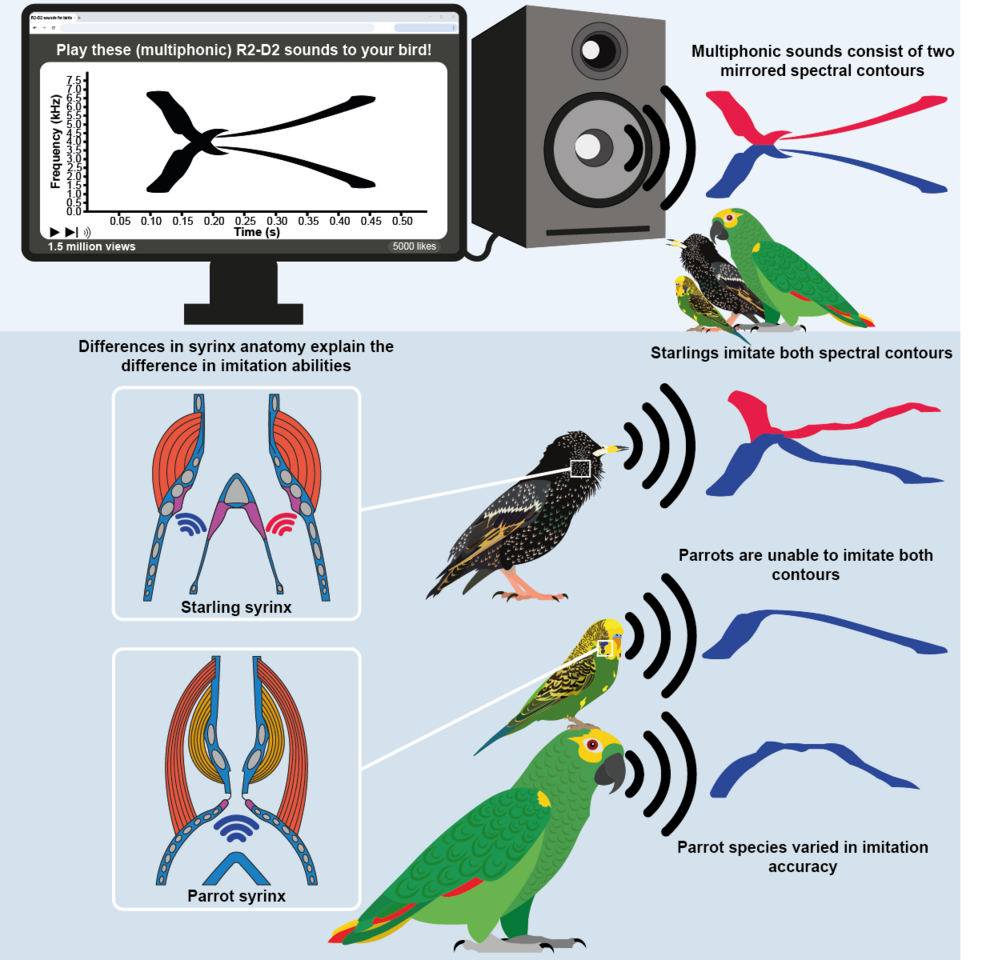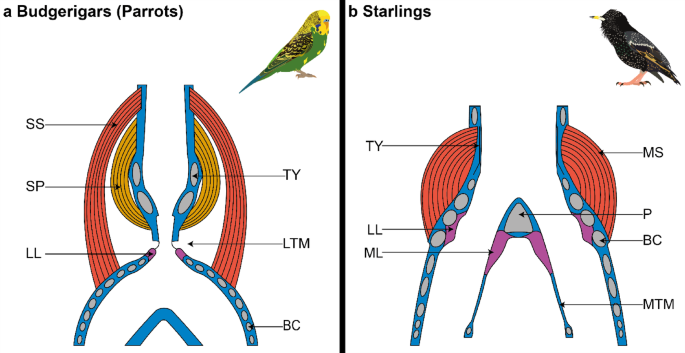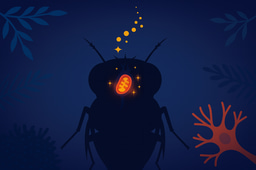Can Birds imitate Artoo-Detoo? Yes—And Some Are Surprisingly Good at It
Published in Ecology & Evolution, Zoology & Veterinary Science, and Behavioural Sciences & Psychology

In a recent study, researchers from Leiden University and the University of Amsterdam put nine species of parrots and European starlings to the test. It turns out that starlings had the upper hand when it came to mimicking the more complex “multiphonic” sounds. Thanks to the unique morphology of their vocal organ, the syrinx, which has two sound sources. This allows starlings to reproduce multiple tones at once—perfect for R2-D2-style chatter.
Parrots, on the other hand, are limited to producing one tone at a time (just like humans). Still, they held their own when it came to the simpler “monophonic” beeps of R2-D2. Interestingly, it weren’t the famously chatty African grey parrots or amazon parrots that did best—but the smaller species, like budgerigars and cockatiels. These little birds, often thought of as less impressive vocalists, actually outperformed the larger species in this specific task, likely by using different strategies to imitate sounds.
Our research offers a fun but powerful window into how anatomy, like the structure of a bird’s vocal organ, can shape the limits and possibilities of their vocal skills. It is the first time that so many different species all produced the same complex sounds, which finally allows for a direct comparison. This shows that even sounds from science fiction can teach us something real about the evolution of communication and learning in animals.
And here’s the cool part: much of the sound data came from pet owners and bird lovers participating in citizen science through the Bird Singalong Project (@birdsingalongproject). With their help, we were able to gather a richer, more diverse collection of bird sounds than ever before, proving that science doesn't always have to happen in a lab.
Follow the Topic
-
Scientific Reports

An open access journal publishing original research from across all areas of the natural sciences, psychology, medicine and engineering.
Related Collections
With Collections, you can get published faster and increase your visibility.
Reproductive Health
Publishing Model: Hybrid
Deadline: Mar 30, 2026
Sepsis: Treatment, intervention, mortality
Publishing Model: Open Access
Deadline: Dec 23, 2025






Please sign in or register for FREE
If you are a registered user on Research Communities by Springer Nature, please sign in